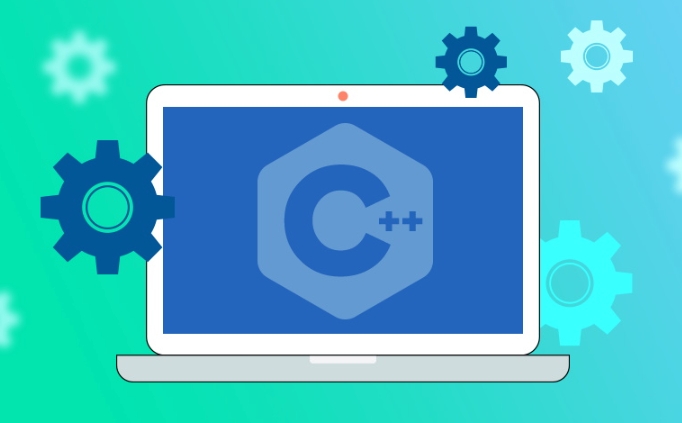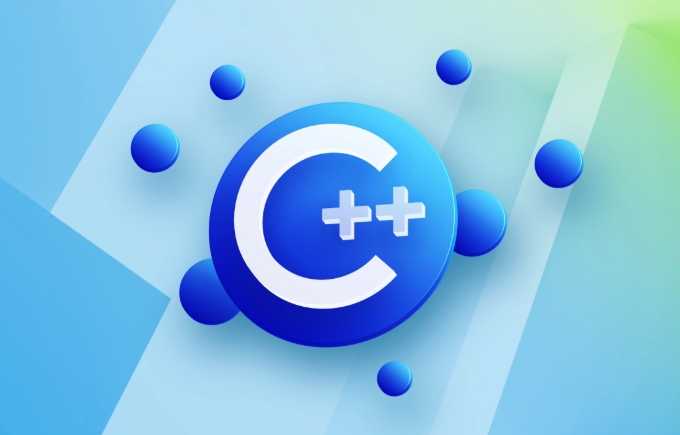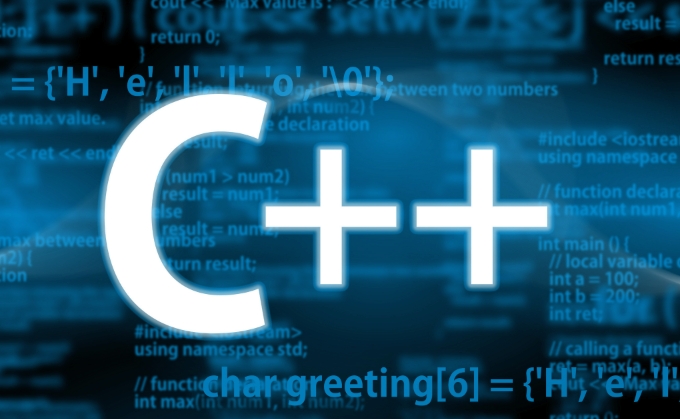A null pointer in C is a special value indicating that a pointer does not point to any valid memory location, and it is used to safely manage and check pointers before dereferencing. 1. Before C 11, 0 or NULL was used, but now nullptr is preferred for clarity and type safety. 2. Using null pointers helps avoid accessing invalid memory, improves code safety, and prevents undefined behavior from uninitialized pointers. 3. Common use cases include initializing pointers, checking before dereference, returning from functions on failure, and marking unused entries in data structures. 4. The keyword nullptr is a literal of type std::nullptr_t, making it more readable and less error-prone, especially in function overloading contexts.

A null pointer in C is a special value that indicates a pointer doesn't point to any valid memory location. It's essentially a way to say, "this pointer isn't pointing at anything right now." Before C 11, people often used 0 or NULL for this purpose, but now the preferred and more readable way is to use nullptr.

Why Null Pointers Matter
You'll often run into situations where you need to check if a pointer is valid before using it. Trying to access memory through a pointer that isn't set correctly can crash your program or cause unpredictable behavior. That’s why setting pointers to nullptr when they aren’t in use — and checking them before dereferencing — is a good habit.

- Helps avoid accessing invalid memory
- Makes code safer and easier to debug
- Prevents undefined behavior from uninitialized pointers
Using nullptr in Modern C
Since C 11, nullptr has been the standard way to represent a null pointer. It's not just a keyword; it's a literal of type std::nullptr_t, which makes it clearer in code and avoids confusion with the integer 0.
For example:

int* ptr = nullptr;
if (ptr) {
// This block won't run because ptr is null
}Compared to older styles like:
int* ptr = NULL; // Common before C 11, but less precise
or even worse:
int* ptr = 0; // Works, but looks like an integer assignment
Using nullptr improves readability and helps prevent bugs, especially with function overloading where types matter.
When and How to Use Null Pointers
There are several common scenarios where null pointers come in handy:
- Initialize pointers before you assign them a valid address.
- Check before dereferencing, like before using
*ptr, make sure it's not null. - Return values from functions that might fail to find or allocate memory.
- Mark removed or unused entries in data structures like linked lists or trees.
Here's a quick pattern you’ll see:
int* search(int arr[], int size, int target) {
for (int i = 0; i < size; i) {
if (arr[i] == target)
return &arr[i];
}
return nullptr; // Indicates not found
}And then later:
if (ptr != nullptr) {
std::cout << *ptr << std::endl;
} else {
std::cout << "Not found" << std::endl;
}It’s not complex, but it’s easy to overlook checking pointers — and that’s where problems start.
The above is the detailed content of What is a null pointer in C ?. For more information, please follow other related articles on the PHP Chinese website!

Hot AI Tools

Undress AI Tool
Undress images for free

Undresser.AI Undress
AI-powered app for creating realistic nude photos

AI Clothes Remover
Online AI tool for removing clothes from photos.

Clothoff.io
AI clothes remover

Video Face Swap
Swap faces in any video effortlessly with our completely free AI face swap tool!

Hot Article

Hot Tools

Notepad++7.3.1
Easy-to-use and free code editor

SublimeText3 Chinese version
Chinese version, very easy to use

Zend Studio 13.0.1
Powerful PHP integrated development environment

Dreamweaver CS6
Visual web development tools

SublimeText3 Mac version
God-level code editing software (SublimeText3)

Hot Topics
 How to handle high DPI display in C?
Apr 28, 2025 pm 09:57 PM
How to handle high DPI display in C?
Apr 28, 2025 pm 09:57 PM
Handling high DPI display in C can be achieved through the following steps: 1) Understand DPI and scaling, use the operating system API to obtain DPI information and adjust the graphics output; 2) Handle cross-platform compatibility, use cross-platform graphics libraries such as SDL or Qt; 3) Perform performance optimization, improve performance through cache, hardware acceleration, and dynamic adjustment of the details level; 4) Solve common problems, such as blurred text and interface elements are too small, and solve by correctly applying DPI scaling.
 How to understand DMA operations in C?
Apr 28, 2025 pm 10:09 PM
How to understand DMA operations in C?
Apr 28, 2025 pm 10:09 PM
DMA in C refers to DirectMemoryAccess, a direct memory access technology, allowing hardware devices to directly transmit data to memory without CPU intervention. 1) DMA operation is highly dependent on hardware devices and drivers, and the implementation method varies from system to system. 2) Direct access to memory may bring security risks, and the correctness and security of the code must be ensured. 3) DMA can improve performance, but improper use may lead to degradation of system performance. Through practice and learning, we can master the skills of using DMA and maximize its effectiveness in scenarios such as high-speed data transmission and real-time signal processing.
 How to understand ABI compatibility in C?
Apr 28, 2025 pm 10:12 PM
How to understand ABI compatibility in C?
Apr 28, 2025 pm 10:12 PM
ABI compatibility in C refers to whether binary code generated by different compilers or versions can be compatible without recompilation. 1. Function calling conventions, 2. Name modification, 3. Virtual function table layout, 4. Structure and class layout are the main aspects involved.
 How to use the chrono library in C?
Apr 28, 2025 pm 10:18 PM
How to use the chrono library in C?
Apr 28, 2025 pm 10:18 PM
Using the chrono library in C can allow you to control time and time intervals more accurately. Let's explore the charm of this library. C's chrono library is part of the standard library, which provides a modern way to deal with time and time intervals. For programmers who have suffered from time.h and ctime, chrono is undoubtedly a boon. It not only improves the readability and maintainability of the code, but also provides higher accuracy and flexibility. Let's start with the basics. The chrono library mainly includes the following key components: std::chrono::system_clock: represents the system clock, used to obtain the current time. std::chron
 How to optimize code
Apr 28, 2025 pm 10:27 PM
How to optimize code
Apr 28, 2025 pm 10:27 PM
C code optimization can be achieved through the following strategies: 1. Manually manage memory for optimization use; 2. Write code that complies with compiler optimization rules; 3. Select appropriate algorithms and data structures; 4. Use inline functions to reduce call overhead; 5. Apply template metaprogramming to optimize at compile time; 6. Avoid unnecessary copying, use moving semantics and reference parameters; 7. Use const correctly to help compiler optimization; 8. Select appropriate data structures, such as std::vector.
 What is real-time operating system programming in C?
Apr 28, 2025 pm 10:15 PM
What is real-time operating system programming in C?
Apr 28, 2025 pm 10:15 PM
C performs well in real-time operating system (RTOS) programming, providing efficient execution efficiency and precise time management. 1) C Meet the needs of RTOS through direct operation of hardware resources and efficient memory management. 2) Using object-oriented features, C can design a flexible task scheduling system. 3) C supports efficient interrupt processing, but dynamic memory allocation and exception processing must be avoided to ensure real-time. 4) Template programming and inline functions help in performance optimization. 5) In practical applications, C can be used to implement an efficient logging system.
 The difference between programming in Java and other languages ??Analysis of the advantages of cross-platform features of Java
May 20, 2025 pm 08:21 PM
The difference between programming in Java and other languages ??Analysis of the advantages of cross-platform features of Java
May 20, 2025 pm 08:21 PM
The main difference between Java and other programming languages ??is its cross-platform feature of "writing at once, running everywhere". 1. The syntax of Java is close to C, but it removes pointer operations that are prone to errors, making it suitable for large enterprise applications. 2. Compared with Python, Java has more advantages in performance and large-scale data processing. The cross-platform advantage of Java stems from the Java virtual machine (JVM), which can run the same bytecode on different platforms, simplifying development and deployment, but be careful to avoid using platform-specific APIs to maintain cross-platformity.
 How to reduce the use of global variables in C?
May 23, 2025 pm 09:03 PM
How to reduce the use of global variables in C?
May 23, 2025 pm 09:03 PM
Reducing the use of global variables in C can be achieved by: 1. Using encapsulation and singleton patterns to hide data and limit instances; 2. Using dependency injection to pass dependencies; 3. Using local static variables to replace global shared data; 4. Reduce the dependence of global variables through namespace and modular organization of code.






